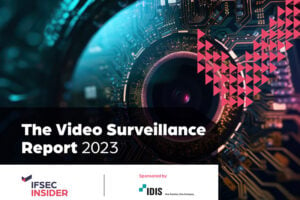How do you measure the harms averted from security incidents that didn’t occur due to the deterrent effect of your new and improved security systems? Without access to a parallel universe in which you didn’t upgrade your systems, you can’t.
Fortunately, modern, network-connected security systems can deliver operational benefits that give security chiefs a powerful argument when it comes to pitching to the boardroom for greater funding.
Security systems are, of course, fundamentally – and historically, solely – about deterring and thwarting criminal acts in order to protect people and property.
However, today’s AI-powered video surveillance and access control software can transcend this core purpose to provide other benefits, often in concert with building management systems (BMS).
Deployed wisely, cutting-edge security systems can play a role in reducing energy use, boosting productivity and sales, enhancing work environments and delivering services more effectively.
New technologies can therefore be justified on the grounds of cutting costs and boosting the bottom line, as well as reducing insurance premiums and improving safety, security and loss prevention.
Consider how, for instance, automatic licence plate recognition (ANPR) systems can eliminate the need for ticket inspectors in carparks.
Access control efficiencies
In mediating the entry and exit of authorised individuals, meanwhile, physical access control systems build a picture of which and how many individuals occupy any given room or floor at any particular moment.
If access control reports show an office building is consistently quiet at the same time each month – say, Friday afternoons – facilities managers could decide to close certain floors to lower cleaning, maintenance, staffing and energy demands.
And integration with building management systems means lights, heating and air conditioning can be automatically switched on or off as buildings become occupied or unoccupied, thus reducing energy use.
Further efficiencies can be realised by consolidating physical and logical access control and integrating them with other services. As a result, employees could use the credential they access the office with – whether it’s a card, key or biometric authenticator – to pay for food in the canteen or enter the adjoining car park, too.
Integration with other business functions, such as HR, can streamline back-end administration, while cross-site standardisation is useful for large organisations with multiple offices.
Increasingly, access control can also be integrated with visitor management systems, making the check-in process more seamless and restricting visitors to the areas they need to access and the times they need to access them.
CCTV video analytics for retail business intelligence
Video analytics software, which uses deep learning algorithms to make sense of CCTV footage, has powerful security functions that vendors have repurposed to generate business intelligence.
It can, for instance, automatically identify and track persons of interest, highlight people or objects that fit a certain description, send alerts when pre-defined behaviors are detected, and detect suspicious packages.
In retail, similar capabilities can realise operational insights that inform decisions – on staffing, procurement and store design – that optimise the customer experience and boost sales.
Video content analysis can, for instance, measure footfall and where it is concentrated, something usefully presented in heatmaps.
The routes customers typically take around the store and where they tend to linger – measured by ‘dwell time’ – can help retailers optimise store layout, product lines and even pricing (imagine the conclusion you might draw, for instance, from a long dwell time around particular products but comparatively unremarkable sales figures).
Supported by proximity and people-counting thresholds, staffing levels can be tweaked to reflect peak periods and reduce crowding and queuing at checkout counters, fitting rooms and bathrooms.
Consider the resource efficiencies yielded by determining bathroom cleaning schedules by through-traffic rather than arbitrary intervals.
The ability to monitor shopper numbers and density also has a powerful application in relation to Covid-19 guidelines on limiting headcounts or enforcing social distancing.
Stores can learn how their customer demographics break down by age and gender, too, which can inform marketing and procurement decisions.
However, functionality that analyses individuals’ characteristics will raise understandable privacy concerns – something vendors have, thankfully, taken into consideration.
Data privacy mechanisms
Mindful of GDPR and equivalent data protection regulations in force around the world, reputable technology providers have ensured that retail-focused applications only ever convey information about shoppers as a group, not as individuals.
CCTV systems more generally should be privacy-protecting by design at every stage – capturing, storing, sharing and deleting data.
Among the most important privacy features is dynamic anonymisation, which ensures anonymity by default, with operators only unmasking individuals suspected of criminal wrongdoing.
Even more reassuring from a privacy perspective – and most relevant for non-security applications like monitoring footfall or for hazards – is permanent masking, where data subjects are anonymised with no possibility of reversing the process.
Redaction, meanwhile, is used post-hoc when individuals featuring in footage relevant to a criminal investigation are anonymised if they’re not under suspicion themselves.
Upgrade your security systems with ESA Risk
For advice on physical security or to enquire about a free security risk assessment, contact me, Liam Doherty, Security Consultant at [email protected] or +44 (0)843 515 8686.
This article was originally published by Liam Doherty on ESA Risk.
Free Download: The Video Surveillance Report 2023
Discover the latest developments in the rapidly-evolving video surveillance sector by downloading the 2023 Video Surveillance Report. Over 500 responses to our survey, which come from integrators to consultants and heads of security, inform our analysis of the latest trends including AI, the state of the video surveillance market, uptake of the cloud, and the wider economic and geopolitical events impacting the sector!
Download for FREE to discover top industry insight around the latest innovations in video surveillance systems.

